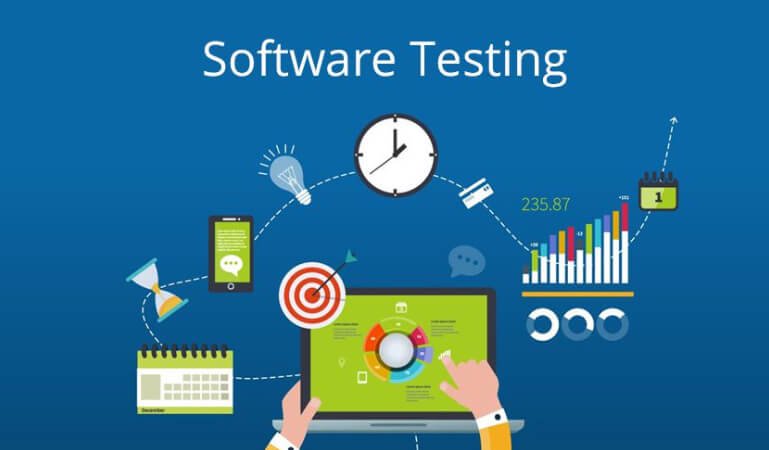All About Software Testing Life Cycle & Its Phases!
Times have changed and so has the concept of SDLC in software training. Today, it involves so much more than just detecting ad fishing bugs. What was once an entire job is now only one part of a six-step process.
Unlike before, developers are now required to have a good working knowledge of all the stages of the SDLC. They need to be familiar with every phase – right from the requirement analysis to operations and maintenance or the conclusion stage. Hence, the Software Testing Life Cycle has become all the more crucial. The new ways of SDLC have been introduced so that everyone in a software development team works in sync in order to deliver the best possible solutions.
What is the Software Testing Life Cycle (STLC)?
STLC is essentially a six-step process of software testing. It involves identifying test activities to carry out and when to execute them. Developing software involves a sequence of steps. In a similar manner, testing also has steps that should be executed systematically. There are multiple types of software testing, each tailored to fit a certain set of requirements specified by every organization. But, there exists a basic structure that any and every testing model follows. Let’s learn about every step a little in-depth-
Different Software Testing Life Cycle Phases
As they say, it’s the details that make the bigger picture look better, same is the case with Software Testing Life Cycle. Each phase of the cycle is designed to create a full-proof system that functions in a way that ensures the best results. Let’s look at each of the six steps in detail to better understand the importance of their role:
Requirement Analysis:
This is the first and the most important phase of the Software Testing Life Cycle (STLC). Reason being that if the requirements are not understood correctly by the testing team, the execution often falls prey to errors and half-baked solutions. Understanding of what is to be tested is crucial. In case there are doubts regarding the requirement, this is the phase where the testing team communicates them with the stakeholders i.e. Client, Business Analyst, Technical Leads, System Architects. Once there is clarity on the requirements and everyone is on the same page, the planning phase begins!
Planning Phase:
Once the requirement analysis is complete, the test planning starts. This is the most intricate of all the phases and needs careful thought and attention because here is where resource allocation, determining roles and responsibilities, tool selection, training requirements, etc. happens – all in accordance with the requirements. The manager or the lead of the testing team calculates the estimated effort and cost for the testing work. Test plan and effort estimation documents are the end deliverables of this process.
Test Case Development:
This phase involves the development of test cases, test scripts, and test data. As soon as the test cases are ready, they are thoroughly reviewed by the team lead or manager. The team prepares the Requirement Traceability Matrix (RTM) as well. The purpose of the Requirements Traceability Matrix is to ensure that all requirements defined in the initial phases are tested in the test protocols. Test Cases, Test Scripts, Test Data, and Requirements Traceability Matrix are the end deliverables of this process.
Test Environment Setup:
The test environment setup involves determining the conditions on which software is tested. Being an independent activity, this phase can begin alongside the test case development phase. The beauty of it is that the testing team is not involved in this process; the developer or the client has to provide the team with the ideal testing environment. While this is being done, the test team can start working on the smoke test cases to check the effectiveness of the provided test environment.
Execution Phase:
Once the test cases prepared during the initial stage and the test environment receives a go-ahead from the team lead, the testing team starts executing these approved test cases. If defects are detected in a few of the test cases and the result is Pass/Fail, then this should be updated in the test cases. The defect report should be updated with the failed test cases and should be delivered to the Development Team through a bug tracking tool like Quality Center. The developers can then fix the defects as re-testing can only be carried out after the defects are fixed.
Conclusion Phase:
In this last stage of STLC, the entire process of testing is analyzed. A meeting is held and every involved in the completion of the cycle is required to attend. The entire cycle is then evaluated based on test coverage, quality, time, cost, software, business objectives. The test team identifies strategies that can prove to be beneficial in the future by analyzing the particulars such as test cases and defect reports. This helps in bringing better efficiency and output in future projects. The creation of Test Closure Report and Test Metrics also happens during this last phase.
Enhance your skills with the best Software Testing Training Institute in Pune!
Eager to get started with the cycle? Get the best software testing training in Pune with Cyber Success – the leading Software Testing Training Institution in Pune brings you 100% placement assistance, hands-on training under the guidance of Industry Experts, and preparation for global certification!
We ensure that our training methods are in sync with the latest industry requirements. Training commences from scratch and concludes with a major project that helps with portfolio building. Team-wise allocation of projects helps students with getting accustomed to teamwork. What’s more? Extra classes are organized to clarify all doubts. If you are looking for ‘software testing classes in Pune’ or ‘software testing course near me’, then you have come to the right place



